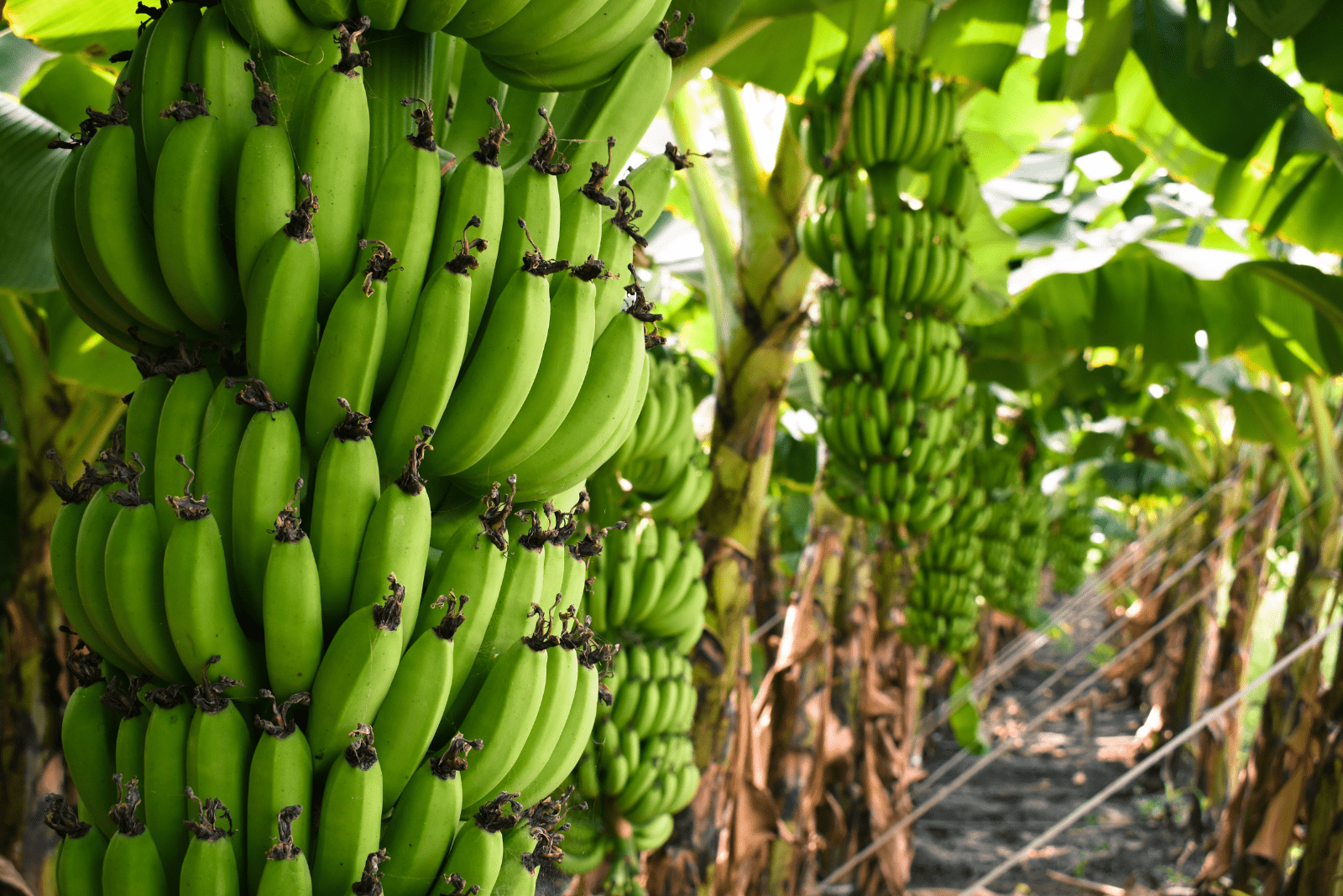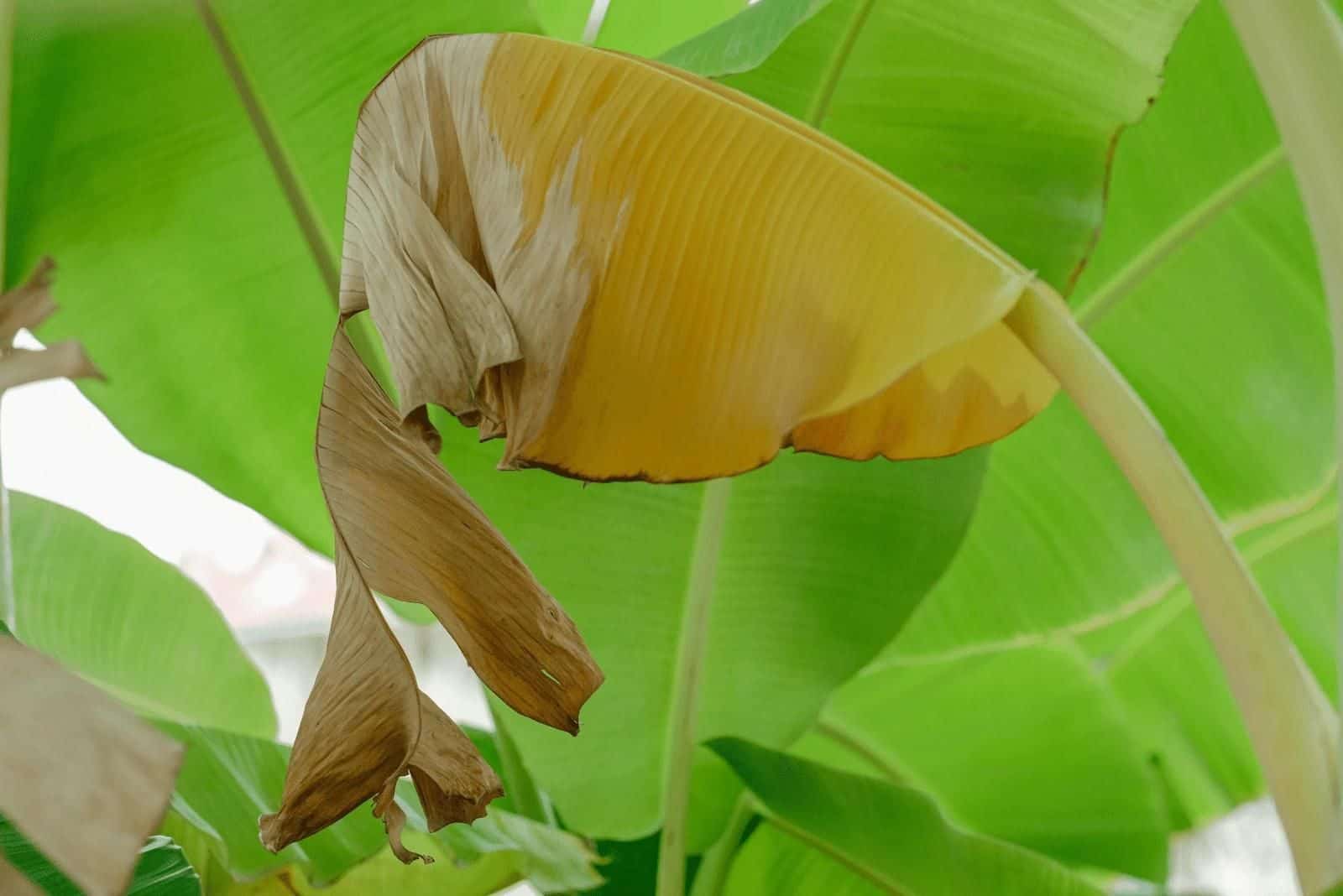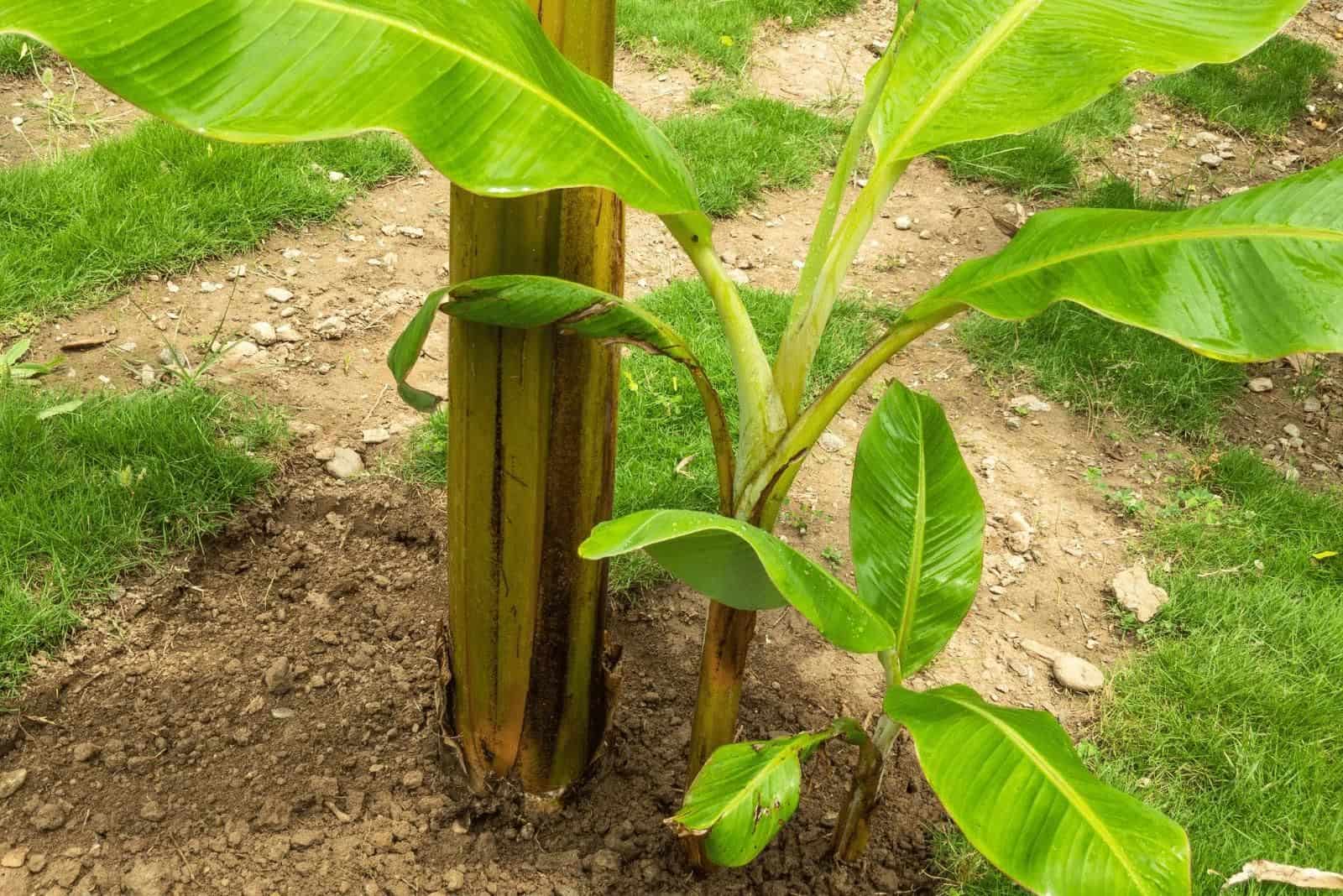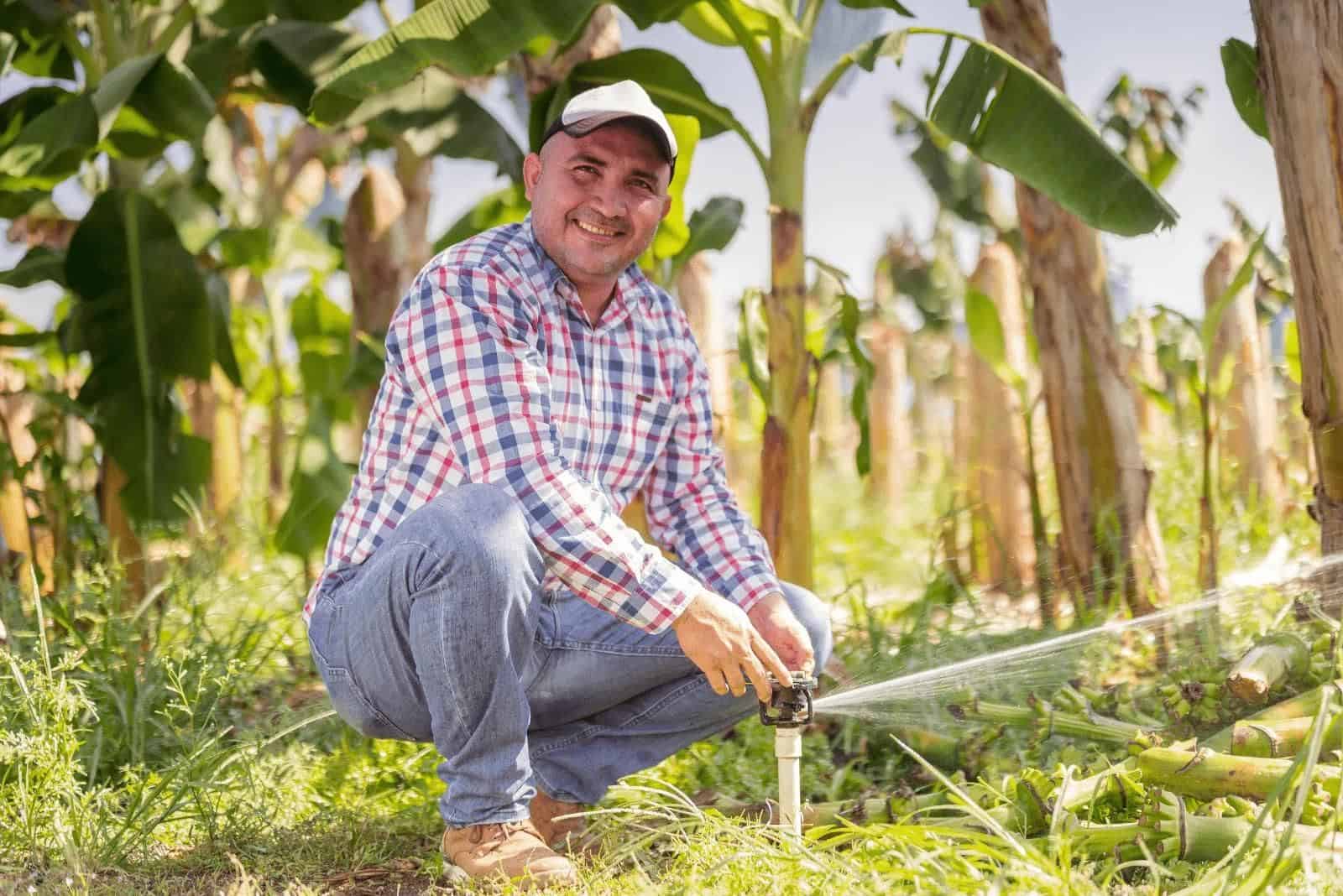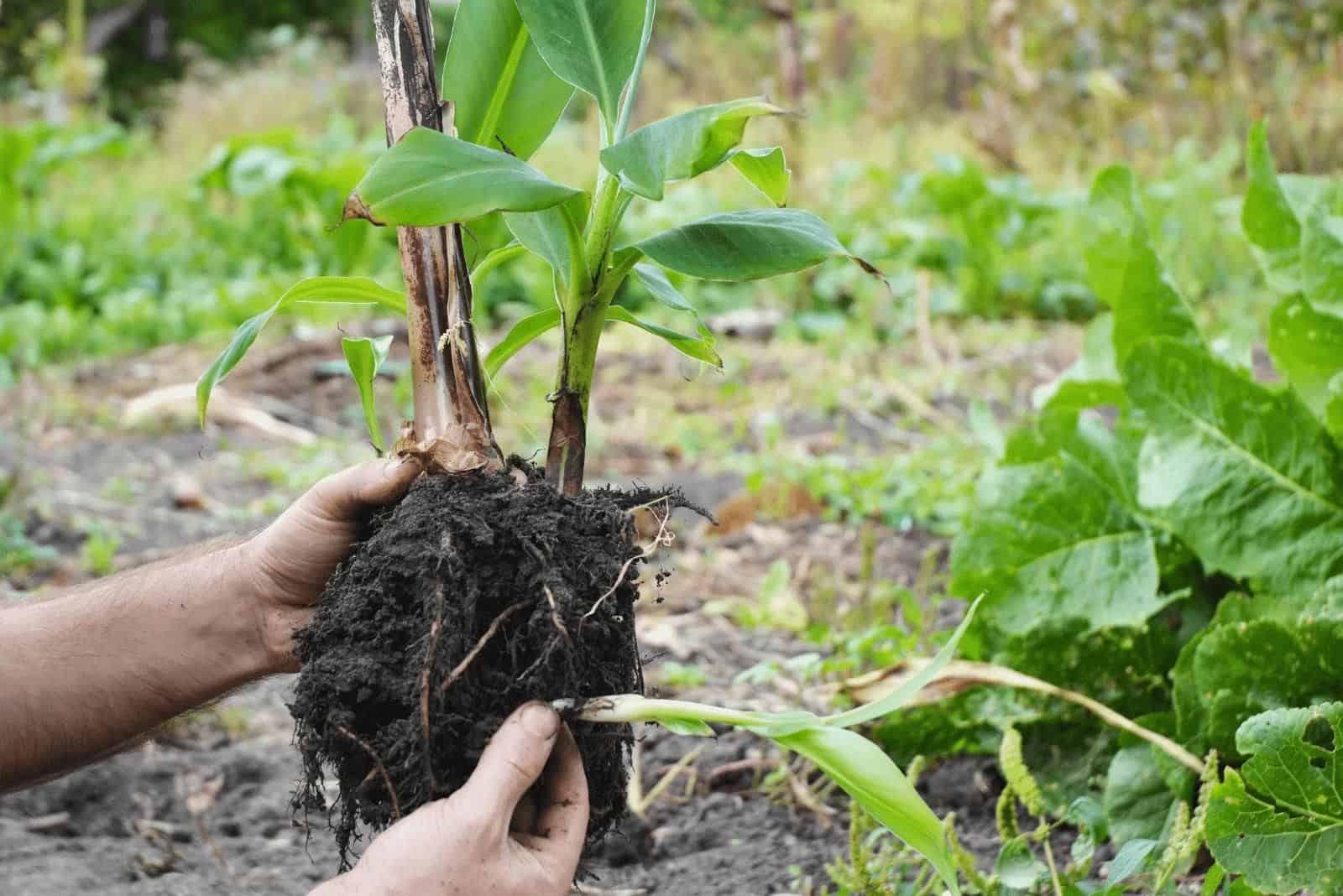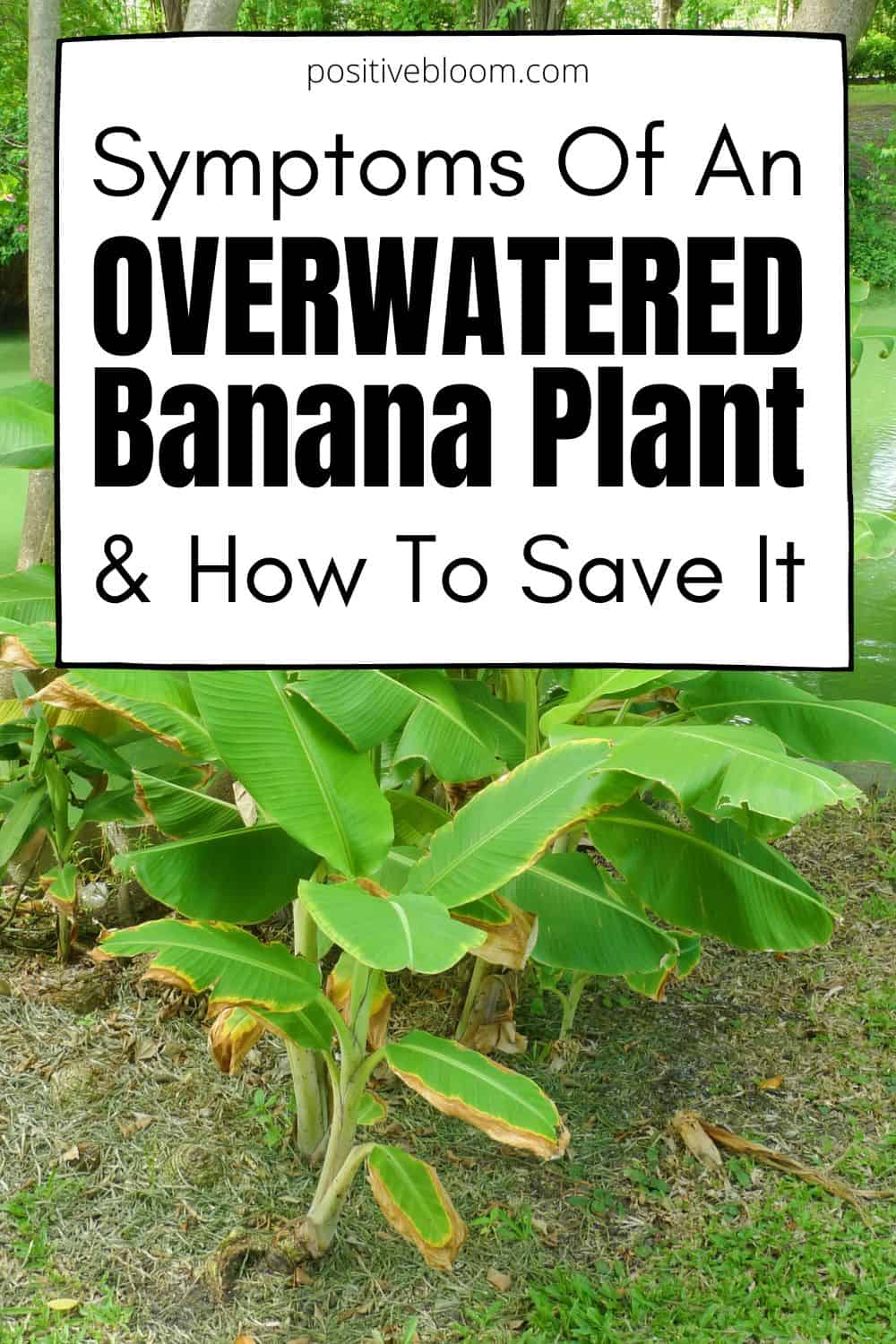Is there anyone who doesn’t like bananas? I don’t think so! These amazing plants bring a touch of tropics into households or gardens. Dark green foliage and a fast-growing rate make these plants desirable in all plant collections.
If you’ve ever grown banana plants or know someone who has, you’ve heard of their thirst. These are, indeed, moisture-loving plants, so it’s uncommon to deal with an overwatered banana plant.
However, too much water in the soil of banana plants may be detrimental, which is why it’s essential to determine if your plant is suffering from overwatering.
I’ll show you the signs of an overwatered banana plant and how to fix this issue in this article. I’ll also tell you more about watering bananas and preventing overwatering.
Let’s get started!
Symptoms Of An Overwatered Banana Plant
You may often come upon the name banana tree, but these plants don’t have woody stems. Instead, they grow from stalks and, therefore, aren’t trees.
If your banana plant displays yellow or curling leaves, softened stems, brown edges, spots on the leaves, its leaves fall off, or the soil gets mushy, you are dealing with an overwatered banana plant.
Let’s get into details!
Yellow Leaves
All growers agree on one thing; if your plant displays yellow leaves, check for root rot. This also applies to banana plants.
This is actually one of the most common symptoms of root rot in all plants. Although yellowing may appear due to other things, such as underwatering or direct sun, the first thing to check is the root system.
If your banana tree suffers from root rot, you don’t have much time to save it, so as soon as you notice yellowing of the leaves closest to the base of the plant, act immediately.
Yellowing is most frequently followed by wilting; if this happens, your banana plant might die soon.
Why? Excess water in the soil for a long time will suffocate the roots, and the banana plant leaves won’t receive any water or nutrients in this case.
Leaves Curling
Although it may seem logical that the leaves start to curl due to underwatering, this frequently happens because of overwatering.
In both situations, the leaves get dehydrated. If underwatering is the culprit, the soil and banana roots cannot provide the leaves with enough water.
On the contrary, excessive water will prevent the roots from performing. If they are dead, they will be unable to supply water to the leaves.
This is a normal response of plant leaves to a lack of water – they reduce their surface area to conserve moisture for longer.
Softened Stem
The leaves and the roots aren’t the only ones to tell if your banana plant is being overwatered; the stem will also soften if your plant doesn’t have any energy left.
It can’t support itself because all the other parts of the plant are no longer functioning, so it doesn’t receive any nutrients.
Your banana plant is in extreme danger and one step from death at this point.
Leaves Falling Off
If the leaves start turning yellow and droop, you are dealing with an overwatered banana tree.
Dropping leaves indicate that the root system isn’t supplying water and nutrients. The leaves lose their strength and fall off.
But don’t panic immediately if your banana starts losing its leaves. Check its overall health, and if no other signs exist, your banana plant may have entered dormancy.
Brown Edges And Spots On Banana Leaves
Another common sign of an overwatered banana plant is brown edges and spots on the leaves. There are several frequent causes of brown dots on banana leaves, such as low humidity and pests. Still, I recommend determining the soil moisture content if you notice browning.
What’s going on with the plant? The plant cells are drowning, and as a result they swell and create blisters.
Brown spots occur after blisters; this is known as leaf edema and is commonly found on the undersides of the leaves.
Mushy Soil
If the top of the soil is coated with a powdery substance, it is most likely due to fungal growth below the surface.
The more water your banana receives, the more fungi will develop in the soil. Overwatering is the main cause of fungal diseases in banana tree soil.
How To Save An Overwatered Banana Plant
If you notice any of the signs of an overwatered banana plant mentioned above, you must start saving your plant immediately.
You can save an overwatered banana tree by following these 4 steps:
1. Checking the severity of the damage.
2. Allowing your banana plant to dry.
3. Removing damaged leaves.
4. Repotting your banana plant.
Let’s get into more detail!
Check The Severity Of The Damage
Don’t skip checking the severity of the damage; there’s no purpose in reviving a dead plant, and there’s no need to disturb the roots by repotting if the damage isn’t severe.
If your banana plant still has some green leaves and the stem is soft, you can proceed with the steps below.
However, if your banana is wilting, it displays yellow or brown leaves, and has a softened stem, it’s most likely dead and you can’t do anything.
Allow Your Banana Plant To Dry
An essential step is helping your banana plant get rid of the excess water in the soil. Of course, you won’t leave the plant to dry for a month, but if it’s mostly healthy and isn’t severely damaged, allow the soil to dry out well.
Potted banana plants face the issue of overwatering more frequently, which is why you need to use pots with drainage holes.
You need to cut back on watering until your banana plant shows signs of improvement, and it may take a while until the soil dries out.
It’s important not to change any of the conditions at this point. So, don’t increase humidity to promote water evaporation or give your banana plant more direct sun than it needs.
Remove Damaged Leaves
Only severely damaged, diseased, and discolored leaves should be removed.
Although the leaves aren’t fully healthy, they still use nutrients and water. That’s why removing them to leave all the nutrients and water for healthy and new leaves is important.
When removing the leaves, you need to use sanitized cutting tools unless you want the infection to spread to the healthy leaves!
Repot Your Banana Plant
Your banana plant will most likely need repotting. If it suffers from root rot, you can’t save it in any other way except repotting.
Prepare a new pot (for indoor banana plants), a pair of pruners or scissors, new potting soil, and sterilizing solution.
Take your banana tree out of the pot (or take it out of the soil if you’re growing it outdoors).
Sanitize your pruners or scissors, and cut off any discolored or damaged banana plant rhizomes.
Prepare the soil; a banana plant needs fertile, deep, and well-draining soil. You can add materials that will ensure good drainage, such as perlite.
Your banana needs a lot of nutrients at this point, so it would be best to add a layer of mulch on top of the banana soil.
Banana plants, just like all other potted plants, go through transplant shock after repotting. Moist soil is key during the post-repotting period. Lots of water and too little water may be dangerous, so stick to a proper watering schedule.
What Is The Best Way To Water A Banana Plant?
If your banana plants get an inch of rain weekly, there’s no need to add more water.
Bananas need more water during the warmer months, especially if growing in drier climates.
For potted banana plants, give them water when the top half-inch dries out. In this way, you’ll keep the soil moist, but won’t overwater your banana.
Pay attention to the light conditions; bananas need a lot of light, and their watering needs decrease if they don’t receive enough light.
Banana fruits won’t take too much direct light well, so if you are growing bananas to get fruit, be careful with the light.
FAQs
How do you revive a banana tree?
First, you need to determine why your banana tree is dying. If overwatering is the culprit, you most likely need to repot your plant. If underwatering is the issue, water more frequently until your banana plant recovers. If your banana faces pest infestation, you need to use pesticides.
How long does a banana plant take to grow?
The time needed for a banana plant to mature depends on the conditions you provide and the plant species in question. It may take anywhere from 9 to 15 months for most banana plant species to mature.
Wrapping Up
If you live in hardiness zones 9-11, you can plant your bananas outdoors. These plants aren’t hard to maintain and don’t need pollination. Ensuring enough light, nutrients, and water will give you a thriving banana plant.
Although bananas need a lot of moisture, you may quickly get an overwatered banana plant if you don’t follow the right watering schedule.
Your banana has a great chance to recover if you react on time. Therefore, as soon as you notice the signs I showed you in this article, start saving your banana plant using our tips.
Until next time!
Like this post? Share or pin it for later!

